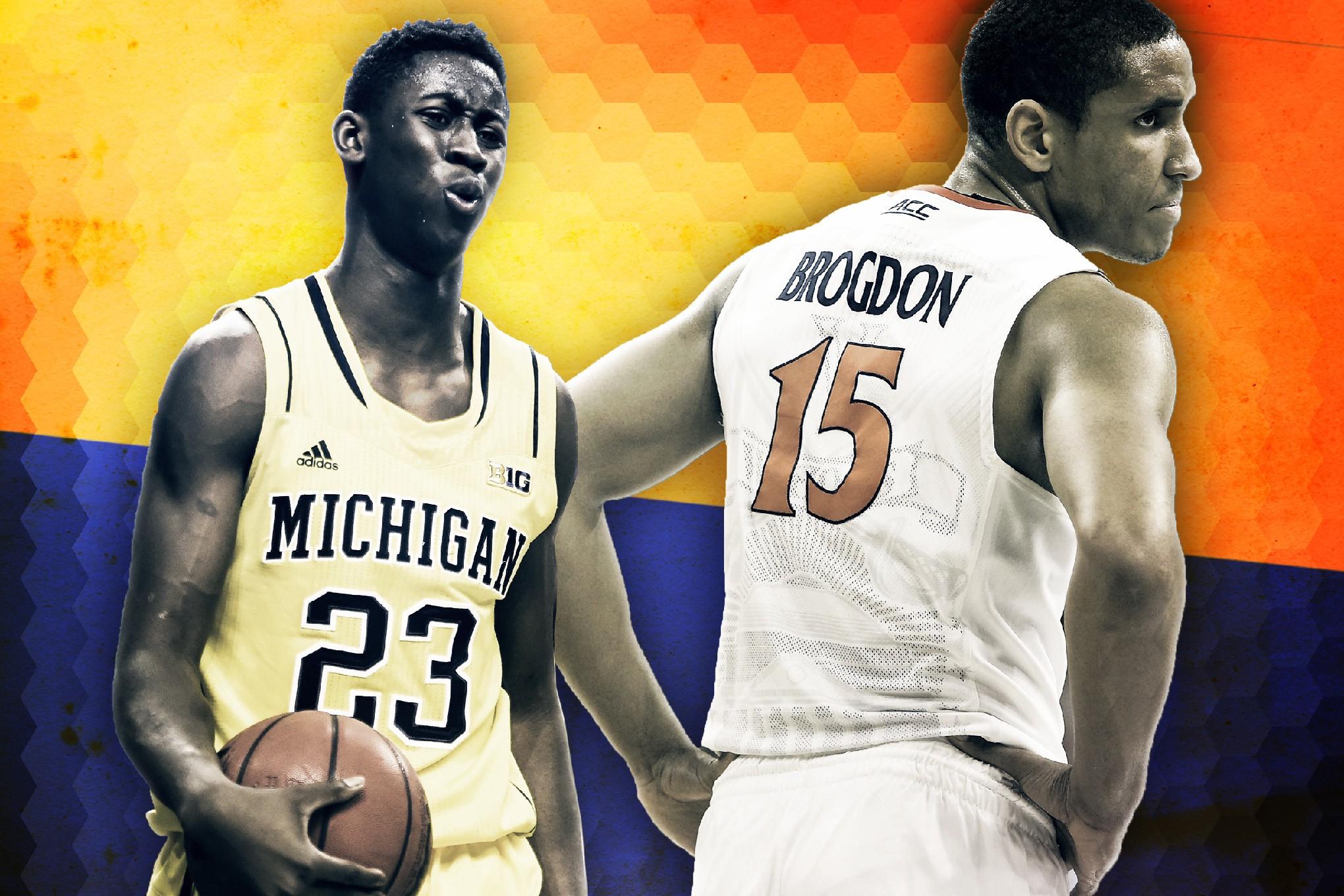
If you listen to most of the projections out there, as soon as Ben Simmons and Brandon Ingram come off the board, this whole draft is going up in flames. There’s no real consensus regarding who the third-best player is or what players should or should not be in the next talent tier. While this draft may not be as eye-opening as 2015, history tells us there still will be solid prospects available at almost every pick. What that means is that guys who go late in the first round or early in the second could have as much value as guys who go late in the lottery. So what should we be looking for? Here are five examples of guys who fit archetypes that generally outperform their draft spot.
The Overlooked Senior: Malcolm Brogdon
It’s not easy to get excited about selecting a 23-year-old with average NBA athleticism, but there’s a lot to be excited about in Brogdon’s profile. He was the 2016 ACC Player of the Year and Defensive Player of the Year. He posted excellent all-around offensive numbers in UVA’s slow-paced system: 18.2 points on 45.7 percent shooting, including 39.1 percent from 3, 4.1 rebounds, and 3.1 assists. He’s a high-character, high-basketball-IQ player who can be plugged into an NBA system right away. At 6-foot-6, 223 pounds, with a 6-foot-11 wingspan, he has the size and reach to guard multiple positions at the next level, even if he’s not a highflier like former college teammate Justin Anderson, a first-round pick in 2015.
The 3-and-D Guy: Patrick McCaw
If long, athletic wing players who can shoot, dribble, and pass are more your thing, McCaw is one of the most interesting players in the second half of the draft. At 6-foot-7, 181 pounds, with a 6-foot-10 wingspan, McCaw is a lightning-fast player with quick hands (2.5 steals per game in 2015–16) — there are entire compilations on YouTube dedicated to McCaw’s ability to steal the ball and score on the other end — that make up for his lack of bulk. He’s also a decent long-range shooter (36.6 percent on 5.6 3-point attempts per game) with a good feel for the game (3.9 assists). He’s being penalized because he wasn’t an elite recruit or a star player and played on a bad UNLV team, but that doesn’t mean he lacks the skill set to be a perfect fit as a role player at the next level.
The Medical-Red-Flag Scare: Caris LeVert
If LeVert hadn’t broken his foot twice and endured other leg injuries in college, he would be a top-20 lock. He’s got everything a wing in the modern NBA needs: shooting (a career 40.1 percent shooter from 3), playmaking (4.9 assists per game), scoring (16.5 points per game), rebounding (5.3 boards per game), and the length (6-foot-10 wingspan) to guard multiple positions. He reminds me a lot of Khris Middleton, another long wing with a good IQ who slipped into the second round because of injury concerns. Whether or not LeVert can stay healthy at the next level, I have no idea. There will come a point pretty early in the second round when he becomes worth the gamble, though.
The Overshadowed Role Player: Robert Carter Jr.
If you were dying for a blueprint on how to get overlooked in college, Robert Carter can offer his expertise. He shared the floor with four other NBA prospects who wanted the ball in their hands on an underachieving team. Carter never got to show what he could do playing with Melo Trimble, Rasheed Sulaimon, Jake Layman, and Diamond Stone, but he is the easiest to project of the bunch because of his physical tools. At 6-foot-9, 251 pounds, with a 7-foot-3 wingspan, he has the size to be a small-ball 5, the athleticism to be a 4, and the skill set of a 3. So if he can ever commit himself to defense and proper conditioning, he could be a real steal.
The Extremely Small Player: Kay Felder
Kentucky’s Tyler Ulis has gotten most of the love in the 5-foot-10-and-under set this year, but Felder’s ball-dominant, bucket-heavy game resembles the success stories of Isaiah Thomas and J.J. Barea a lot more than Ulis’s more restrained floor general approach. Felder put up eye-popping statistics at Oakland — 24.4 points on 48.5 percent shooting, including 35.5 percent from 3, 9.3 assists, 4.3 rebounds, and 2 steals — and it wasn’t just against mid-major competition. He put up 38 points, 6 rebounds, and 9 assists against Washington, 37 points and nine assists against Michigan State, and dropped 30 points on the vaunted Virginia defense. He’s not afraid of anyone and he will be a fan favorite wherever he goes.

